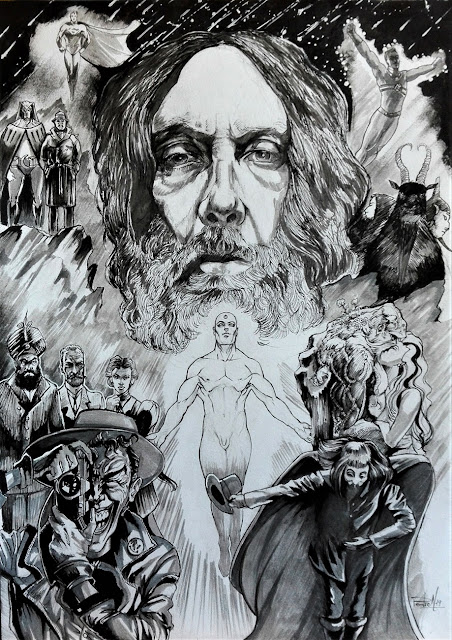Excerpt from an interview by Jay Babcock published in Sci-Fi Universe, 1996:
[...] Moore is also looking ahead to reuniting with Dave Gibbons, his partner on the landmark Watchmen project, for a proposed CD-ROM project based on all-new material.
"The CD-ROMs out there now are impressive in their own sort of way," says Moore. "Myst [for example] is good, but the imagery has a kind of airbrushed blandness to it. The Residents' CD-ROM is brilliant--they strike me as artists who are heading in the right direction.
"But what impresses me more is the stuff that's not being done. There's not been any real attempt to make use of the hallucinatory possibilities of computer art. You think: 'What would Magritte have done, or Escher have done--what would an artist have done rather than designers or illustrators? What would people with some real soul and passion have done?'
"To me, the CD-ROM, or 'virtual reality,' is just a gross physical representation of something we've had all along. A book is virtual reality, music is virtual reality. It's just that with electronic virtual reality you're more immediately wrapped up in it--you don't have to use your imagination so much.
"It strikes me that the only thing you can't do to someone who is in your virtual reality is to touch them. So therefore, most people have the illusion that they are completely safe in a virtual reality-- without stopping to think that most of the things that affect us most in life are not physical events. Most of them are events that occur within our heads, because of our experiences. Therefore, I think that with the right way of thinking about these things you could make a CD-ROM experience that could be quite genuinely moving, genuinely powerful, genuinely affecting.
"We want to do something as far above most CD-ROM experiences as Watchmen was above most superhero comics. Whether we'll achieve that, I don't know, but that's what we're aiming for."
And then, in a mock-spooky voice, Moore confides, "And I wouldn't be surprised if what we do is very spooky."













